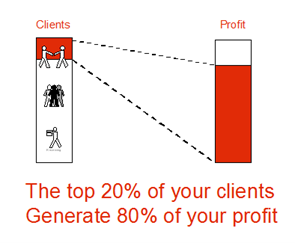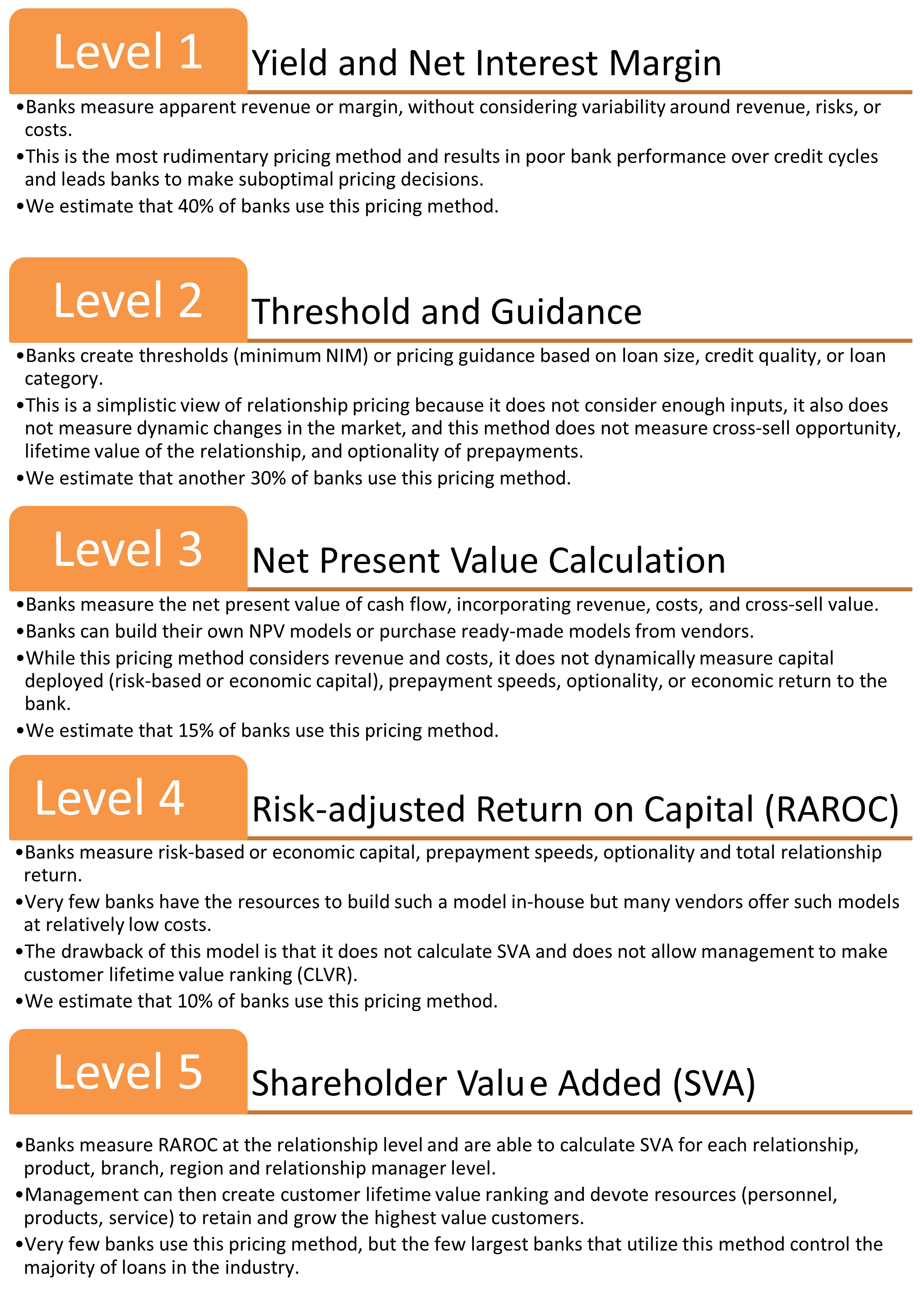Relationship Pricing is Key to Performance
Community banks pride themselves on superior customer service. Approximately 90% of all community banks believe that they provide an above-average level of customer service (of course, the math cannot work that way, as half of all banks should be providing a below-average level of customer service). Research by various consultants shows that 80% of companies across industries rate themselves as providing superior service, but only 8% of these companies genuinely deliver such service. In banking, this disconnect is hurting institutional performance as relationship pricing is not optimized.
We feel that banks must measure profitability at the customer, product, branch, region, or manager level so that management may properly allocate resources (superior service) to drive institutional profitability.
How should management go about measuring relationship pricing? We believe that optimally, management should calculate relationship pricing on shareholder value-added, create customer lifetime value ranking, and direct service at the relationship, product, branch, or manager that holds the highest potential return for the bank.
Seeing The Big Customer Picture of Relationship Pricing
Providing superior service across the entire bank customer base is often counterproductive. Service (a scarce resource) must be directed at its highest return.
Banks must be able to measure relationship profitability for their entire balance sheet, work to retain the most profitable customers, increase return on lower profitable relationships, or lose that business to competition that is better able to serve those relationships.

Banks cannot afford to deliver the same level of service across their entire customer base. Resources need to be allocated according to need, regulatory requirements, and profitability. Businesses perform better when they segment relationships based on customer lifetime value ranking and regulatory needs then allocate resources accordingly. Banks should also consider the cost of service and price services based on product mix and size of customer relationship. The most accurate (but costly) method to measure and segment their customer base is to measure shareholder value added (SVA) for each relationship.
Shareholder Value Added
Ranking customers on shareholder value-added (SVA) is mathematically simple but difficult to implement for most banks. Banks first need to use a risk-adjusted return on capital model (RAROC) to calculate return on economic capital for each relationship, taking into account all products sold for the expected lifetime value of that customer. Banks can then calculate SVA, which requires banks to subtract their cost of capital from net operating profit after tax for each client. For example, two customers may both show a 20% ROROC for the bank, but customer A has $1mm in loans and $1mm in deposits, while customer B has $10mm in loans and $10mm in deposits. While both customers have the same ROE, customer B has 10X the SVA compared to customer A.
Using the SVA methodology, each customer is ranked from highest to lowest in profitability. Banks can then allocate service-based highest potential return for the bank – this is known as customer lifetime value relationship segmentation.
How to Measure Relationship Profitability
Many banks struggle to segment their customers based on relationship profitability. One hurdle is that many community banks do not have a tool to accurately measure profitability at the relationship, product, branch, region, or relationship manager level. However, banks can develop their own tools or purchase pricing models from third-party vendors. Below is a ranking of pricing tools that community banks should consider when assessing their options.

Relationship Pricing Conclusion
Ranking customers’ lifetime value allows banks to tailor service offerings and differentiate pricing for each customer segment. Larger banks utilize RAROC and SVA models to proactively address customer issues and offer special customer-to-client experiences. Community banks can develop or purchase resources to price relationships and segment customers based on customer lifetime value ranking.

